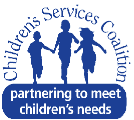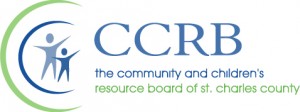This position statement was co-authored by an interdisciplenary group comprised of educators, mental health professionals and researchers; the complete statement, author names and endorsing organizations can be found at: http://curry.virginia.edu/articles/sandyhookshooting
December 2012 Connecticut School Shooting: Position Statement Interdisciplinary Group on Preventing School and Community Violence
December 19, 2012
We all share a common priority: Keeping our children safe. We need to come together in our communities to share our grief and talk about how we can move forward in light of this tragic event. This document updates the School Shootings Position Statement that was disseminated nationally following the tragic school-related shootings of 2006.
It is important to emphasize that our concern is not limited to schools. The Connecticut tragedy is referred to as a school shooting, but it is better described as a shooting that took place in a school. It is also relevant to consider the hundreds of multiple casualty shootings that occur in communities throughout the United States every year. Few of them occur in schools, but of course are especially tragic when they occur. Yet children are safer in schools than in almost any other place, including for some, their own homes.
While schools are of paramount concern, the location of a shooting is not its most important feature, although it is the most visible. From the standpoint of prevention, what matters more is the motivation behind a shooting. It is too soon to draw conclusions about this case, but in every mass shooting we must consider two keys to prevention: (1) the presence of severe mental illness and/or (2) an intense interpersonal conflict that the person could not resolve or tolerate.
Inclinations to intensify security in schools should be reconsidered. We cannot and should not turn our schools into fortresses. Effective prevention cannot wait until there is a gunman in a school parking lot. We need resources such as mental health supports and threat assessment teams in every school and community so that people can seek assistance when they recognize that someone is troubled and requires help. For communities, this speaks to a need for increased access to well integrated service structures across mental health, law enforcement, and related agencies. We must encourage people to seek help when they see that someone is embroiled in an intense, persistent conflict or is deeply troubled. If we can recognize and ameliorate these kinds of situations, then we will be more able to prevent violence.
These issues require attention at the school and community levels. We believe that research supports a thoughtful approach to safer schools, guided by four key elements: Balance, Communication, Connectedness, and Support, along with strengthened attention to mental health needs in the community, structured threat assessment approaches, revised policies on youth exposure to violent media, and increased efforts to limit inappropriate access to guns and especially, assault type weapons.
Balance – Communication – Connectedness – Support
A balanced approach implies well-integrated programs that make sense and are effective. Although it may be logical to control public entrances to a school, reliance on metal detectors, security cameras, guards, and entry check points is unlikely to provide protection against all school-related shootings, including the shooting at Sandy Hook Elementary. Indeed, shootings have occurred in schools with strict security measures already in place. A balanced approach to preventing violence and protecting students includes a variety of efforts addressing physical safety, educational practices, and programs that support the social, emotional, and behavioral needs of students.
Communication is critical. Comprehensive analyses by the U. S. Secret Service, the FBI, and numerous researchers have concluded that the most effective way to prevent many acts of violence targeted at schools is by maintaining close communication and trust with students and others in the community, so that threats will be reported and can be investigated by responsible authorities. Attempts to detect imminently violent individuals based on profiles or checklists of characteristics are ineffective and are most likely to result in false identification of innocent students or other individuals as being dangerous when they actually pose little or no threat. Instead, school authorities should concentrate their efforts on improving communication and training a team of staff members to use principles of threat assessment to take reasonable steps to resolve the problems and conflicts revealed through a threat investigation.
Concerned students, parents, educators, and stakeholders in the community should attend to troubling behaviors that signal something is amiss. For example, if a person utters threats to engage in a violent act or displays a pronounced change of mood and related social behavior, or is engaged in a severe conflict with family members or coworkers, it makes sense to communicate concerns to others who might provide assistance. Early identification is important not only to prevent violence, but to provide troubled individuals the support, treatment, and help they need.
Schools and communities must find effective means to overcome any reluctance to break unwritten rules against “tattling” or “snitching” by communicating to all community members that their lives or the lives of their friends might depend on seeking help for troubled individuals before problems escalate. Channels of efficient, user-friendly communication need to be established and maintained, and can be facilitated when community members, students and staff members feel comfortable bringing concerns regarding safety to the attention of school administrators.
Connectedness refers to what binds us together as families, friends, and communities. All students need to feel that they belong at their school and that others care for them. Similarly, local neighborhoods and communities are better and safer places when neighbors look out for one another, are involved in community activities, and care about the welfare of each other. Research indicates that those students most at risk for delinquency and violence are often those who are most alienated from the school community. Schools need to reach out to build positive connections to marginalized students, showing concern, and fostering avenues of meaningful involvement.
Support is critical for effective prevention. Many students and family members experience life stresses and difficulties. Depression, anxiety, bullying, incivility, and various forms of conflict need to be taken seriously. Every school should create environments where students and adults feel emotionally safe and have the capacity to support one another. Schools must also have the resources to maintain evidence-based programs designed to address bullying and other forms of student conflict. Research-based violence prevention and related comprehensive support programs should be offered, following a three-tier approach, operating at universal (school-wide), targeted (for students who are at risk), and intensive (for students who are at the highest levels of risk and need) levels.
Mental Health, Integrated Threat Assessment, Media Effects, and Access to Guns
Nationally, the mental health needs of youth and adults are often shortchanged or neglected. That needs to change. Using much-needed federal and state funding, community-based mental health organizations should work in cooperation with local law enforcement, schools, and other key community stakeholders to create a system of community-based mental health response and threat assessment. These efforts should promote wellness as well as address mental health needs of all community members while simultaneously responding to potential threats to community safety. This initiative should include a large scale public education and awareness campaign, along with newly created channels of communication to help get services to those in need.
Research has established that continued exposure to media violence (e.g., TV, movies, video games) can increase the likelihood of physically and verbally aggressive behavior, aggressive thoughts, and aggressive emotions. Exposure to violence in the media can lead to (1) displacement of healthy activities, (2) modeling inappropriate behaviors, (3) disinhibition of socially proscribed behaviors, (4) desensitization to the harmful effects of violence, (5) aggressive arousal, and (6) association with a constellation of risk-taking behaviors. Taken together, this research speaks to a strong need to revise policies on youth exposure to violence in the media.
Finally, it is also important to acknowledge that access to guns plays an important role in many acts of serious violence in the United States. Multiple lines of research have demonstrated a clear connection between local availability of guns and gun-related violent behaviors, with estimates of close to 2 million children and adolescents having access at home to loaded, unlocked guns. Although guns are never the simple cause of a violent act, the availability of lethal weapons including assault type weapons to youth and adults with emotional disturbance and antisocial behavior poses a serious public health problem. Our political leaders need to find a reasonable and constitutional way to limit the widespread availability of guns to persons who are unwilling or unable to use them in a responsible, lawful manner.
In summary, we ask for a renewed nationwide effort to address the problem of mass shootings that have occurred repeatedly in our schools and communities. Now is the time for our political leaders to take meaningful action to address the need for improved mental health services and protection from gun violence. At the same time, concerned citizens in every community should engage in comprehensive planning and coordination to prevent violence in our schools and communities. These plans should include access to mental health services for youth and adults who are showing signs of psychological distress, including depression, anxiety, withdrawal, anger, and aggression as well as assistance for the families that support them. The bottom line is that we must all work together toward the common goal of keeping our schools and communities safe.









